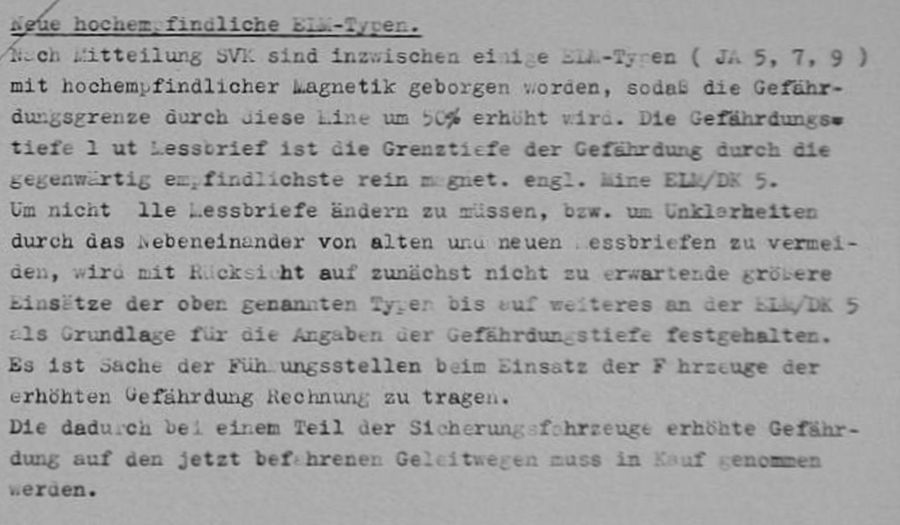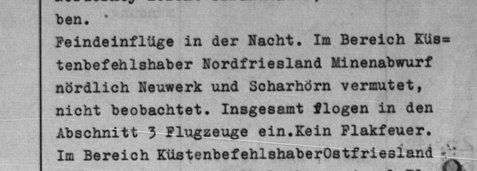
Stand 03.01.24
Bereits gleich nach Beginn der ersten Kriegshandlungen ab September 1939 startete die britische Royal Air Force damit, alle Seewege im Hoheitsgebiet des Deutschen Reiches zu verminen um Handels- und Kriegsschiffen die Durchfahrt unmöglich zu machen. Teilwiese wurde dies mit Schiffen und U-Booten praktiziert, in Landnähe allerdings vornehmlich durch Flugzeuge getätigt.
Aus der Luft kamen anfänglich leichte und mittlere Bomber wie die Handley Page Hampden, die Bistrol Blenheim oder die Vicker Wellington zum Einsatz. Im späteren Verlauf des Krieges übernahmen schwere viermotorige Bomber wie die Avro Lancaster, Short Sterling und British Sunderland diese Aufgabe, sie konnten bis zu fünf Minen auf einmal transportieren.
Das Abwerfen der Minen selbst war keine leichte Aufgabe. Eine Reihe von Überlegungen mussten dabei berücksichtigt werden. Unter anderem Gezeiten, Wassertiefe, Anflugvektor und bekannte feindliche Verteidigungspositonen.
The navigator ensured the correct flight path for the timed mine drop. The pilot of the aircraft had to fly the machine at the designated altitude of around 450 m at a maximum speed of 290 km/h, as at higher speeds the parachute could be torn off by the mine falling to the ground. In the case of sequential drops, the bomb gunner normally dropped the mines in four to six intervals of two to three seconds. If the bomber crew could not place their mines precisely in their position, they were returned to the home squadron in England, unlike bombs. During the war from 1939 to 1945, the British air and naval forces laid thousands of mines (barrage weapons). They used various models for this purpose, more at: NavWeaps, michaelhiske.de
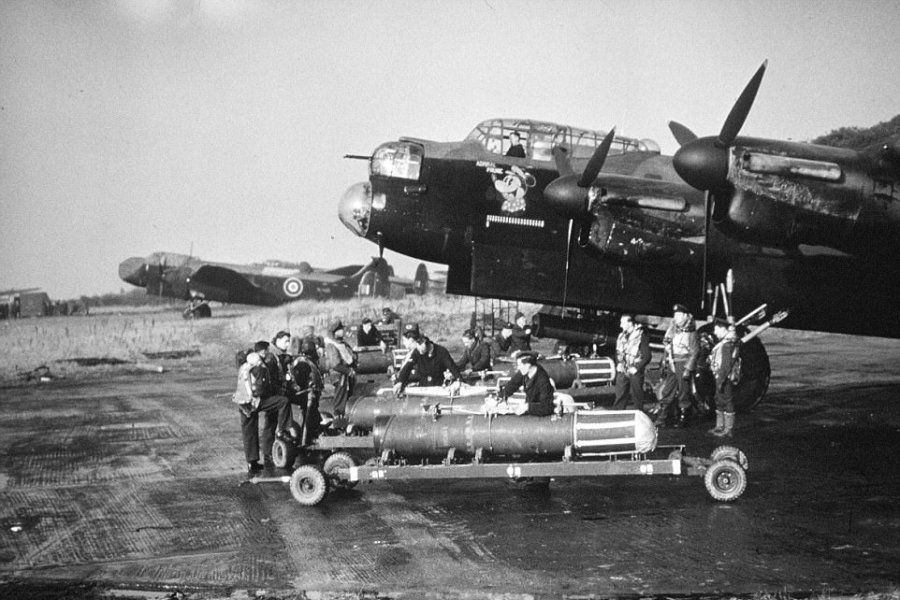
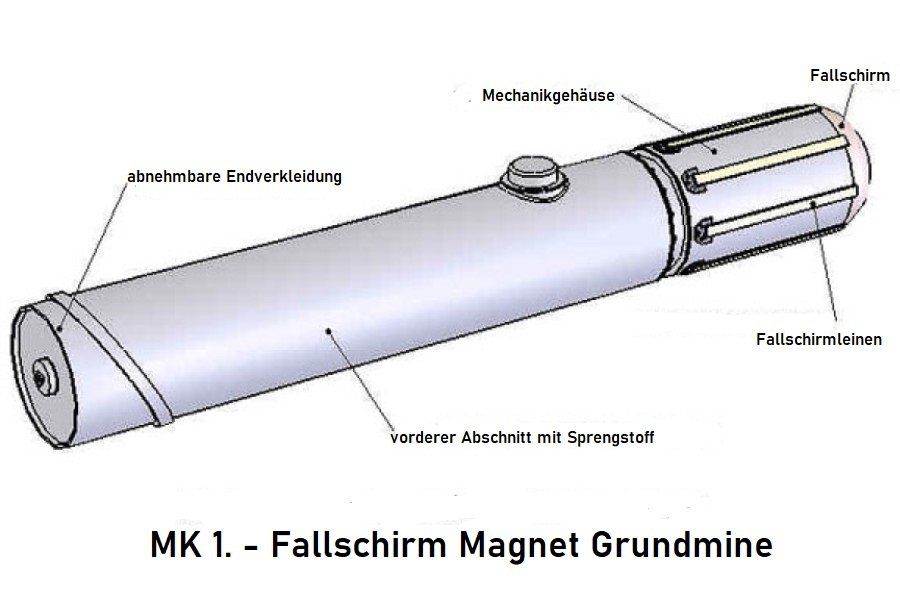
The aircraft mine (ground mine) was cylindrical in shape, with a diameter of about 43 cm and a length of 3 meters, including the wooden or metal casing. It weighed an average of 680 kg, of which 340 kg was explosive (Amatol or Minol). An anti-detonation device prevented other mines from exploding in the immediate vicinity of the exploding mine. A small parachute attached to the end made it easier to dive vertically into the water, and the nose fairing prevented the mine from bending and triggering an explosion when it hit the water while flying through the air. Unlike drift mines, the magnetic mine laid from the air sank to the bottom and then detonated without contact when a corresponding contact approached due to the measured change in the earth's magnetic field. Various British fighter planes were often omnipresent in the mouth of the Elbe at that time, especially at night, and they were located from land using appropriate listening devices. Combat reports repeatedly report on fighting with anti-aircraft positions or picket boats, and sometimes enemy aircraft were brought down by fire. There are also occasional reports of loud explosions coming from the Elbe. It is likely that these were mines detonated during laying. From 1942 onwards, the British Bomber Command and the Coastal Command dropped an average of 1,100 sea mines per month by air. This tied up around 40% of the entire German naval forces and also the Mausi mine-sweeping group for clearance work. Source: https://tailendcharlietedchurch.wordpress.com/operations/gardening-mine-laying/
Right picture: Graphic of a British Handley Page Hampden minelayer in action. This very slow-flying aircraft type was used by the Allies primarily at the beginning of the war in the area of the German Bight and the river mouths.

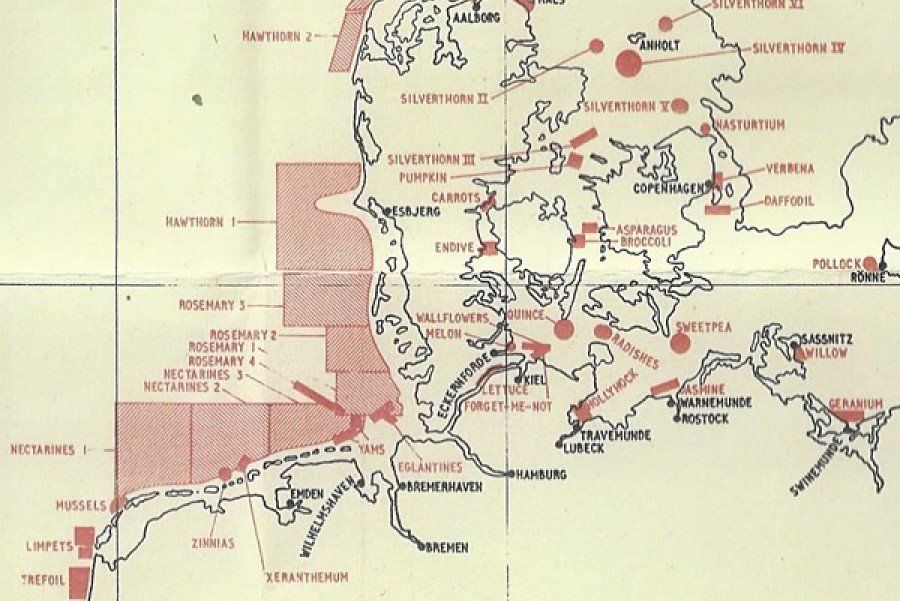
Between April 1944 and May 1945, the British Air Force carried out a major offensive against German sea routes on all fronts. The aim was to bring the trade and transport routes by water to a standstill by laying mines. The code name for this operation was "Gardening". Within the various operational areas, certain targets were identified and designated "gardens". For reasons of secrecy, each was given the name of a garden product such as a flower or a fruit, and the mines were referred to as "vegetables". Hence the common term in Bomber Command jargon for minelaying operations as "gardening". The mouth of the Elbe here lay on the edge of the "Eglantines" (rose hip) and "Rosemary 1" areas.



